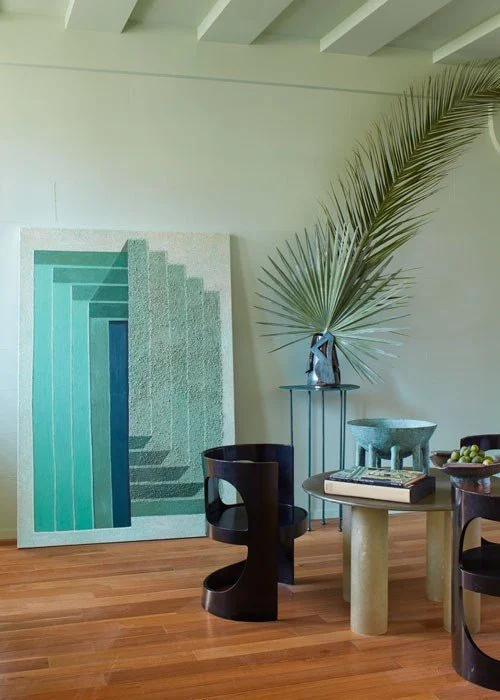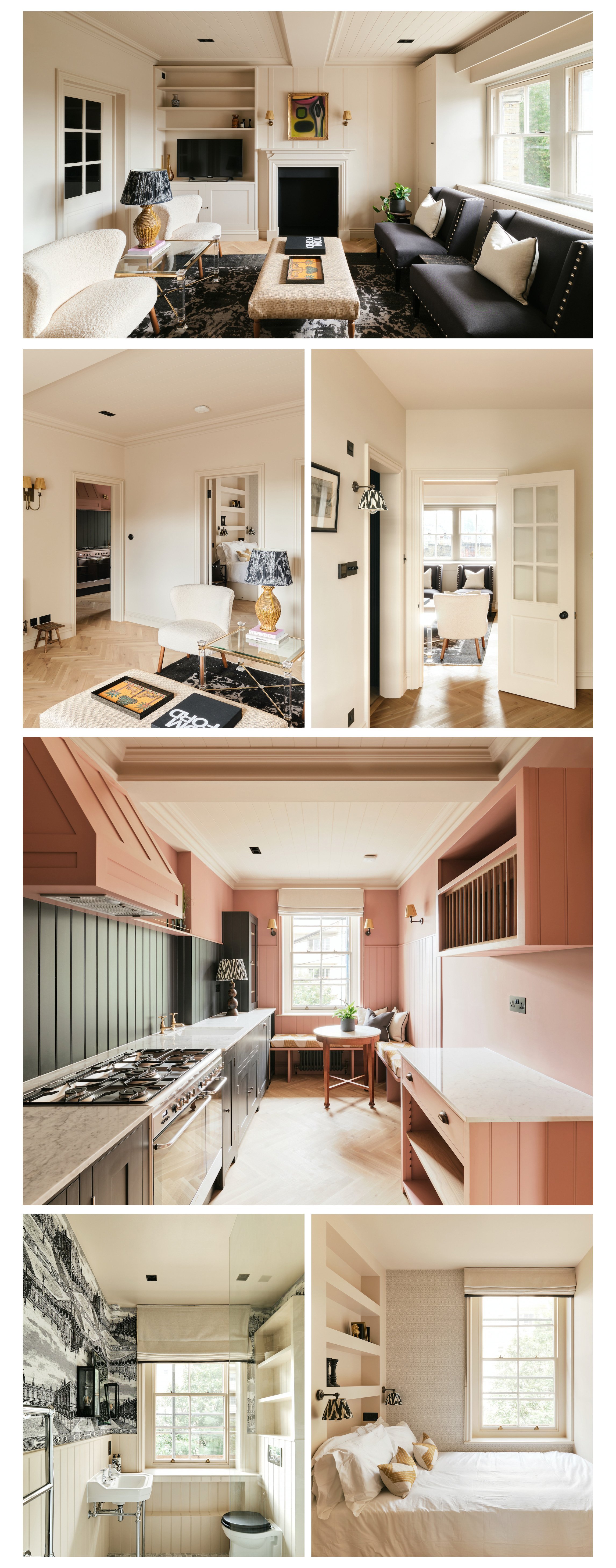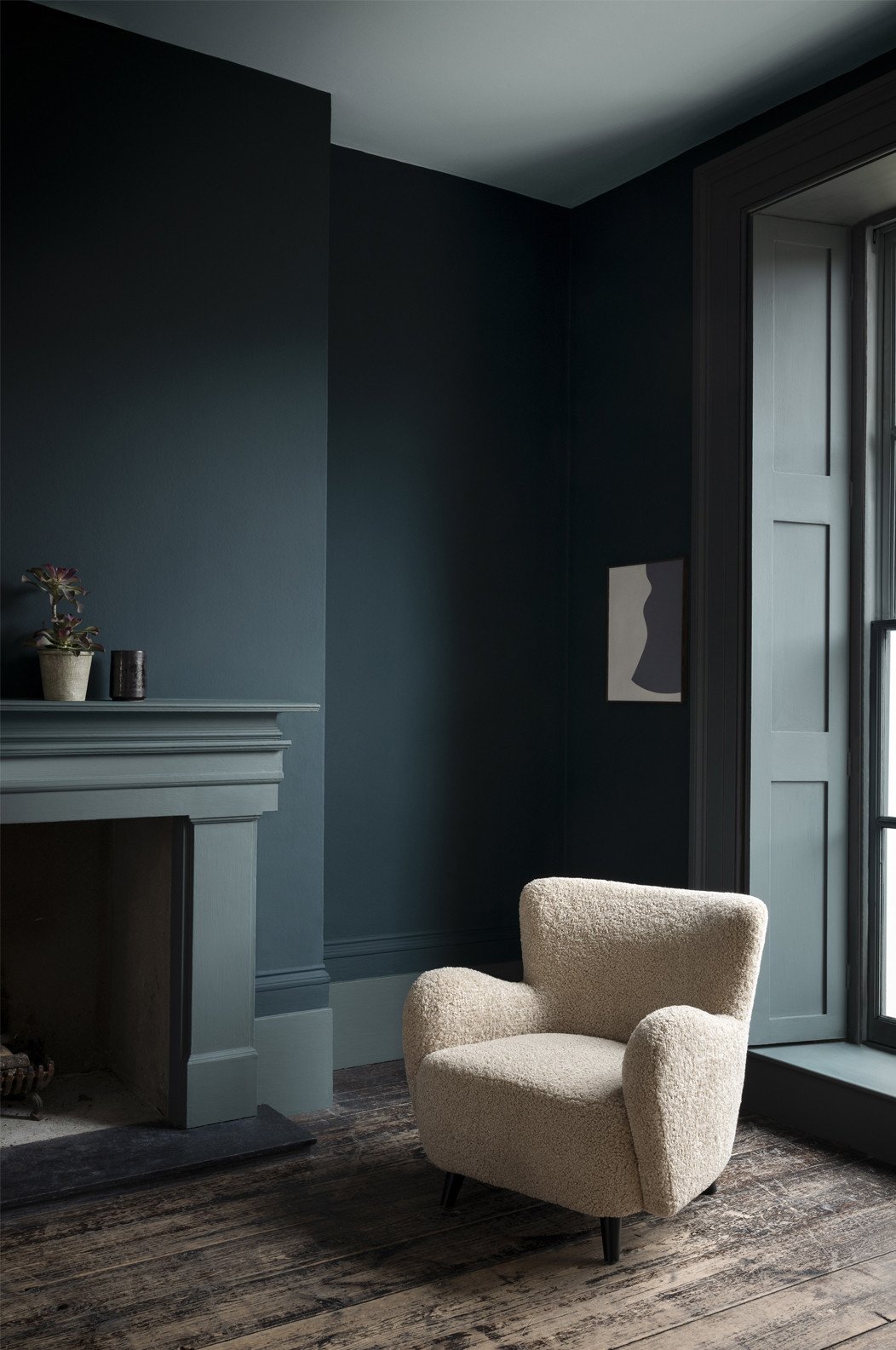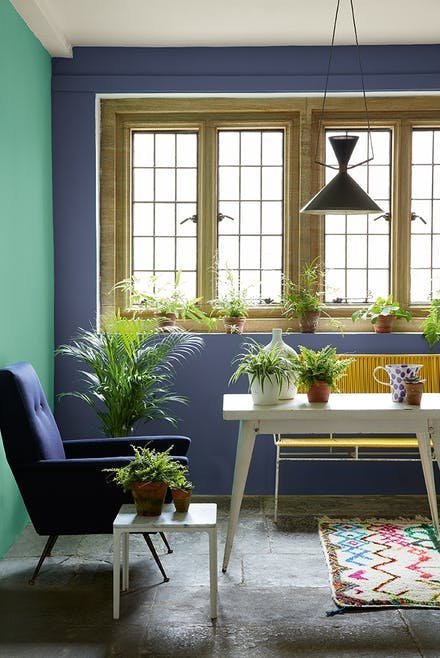Paint Stories Part 2: How to Paint Like a Pro
London Interior Designer Irene Gunter spills the beans (not the paint!) on how the best professional painters and decorators tackle a painting project.
Sometimes you just get the urge to whip a quick coat of paint onto a window frame or skirting board, or perhaps to re-do a guest room. It may be that you’re not up for tackling a major overhaul project, but every now and then, there’s huge satisfaction in getting the brushes out and getting on with the job in question! Avoid basic mistakes and learn how to get good results with our top tips on how to ‘paint like a pro’.
Everyone who has ever tackled a paint project has their own methods and shortcuts, and needless to say, practice makes perfect! Remember that new (or newly plastered) walls don’t need as much attention and prep as older walls in period homes. So in answer to the question ‘how do I paint my walls like a professional?’ I always say, ‘plan and prepare’. It’s not just choosing the right colours, it’s knowing what sort of finish you want and understanding what surfaces you’re painting onto – broadly speaking you need to consider walls, woodwork and joinery, decorative plasterwork, and perhaps metalwork too.
Planning Your Paint Project:
Choose your finish. Generally, it's an emulsion for walls. Choose between matt and washable/wipeable finishes. It’s gloss or eggshell for woodwork (door frames, doors, architrave, dado rails etc). Plasterwork (cornice, corbels, ceiling rose etc) is usually matt emulsion. If the painting project is for a kitchen or bathroom, consider using special paint suitable for rooms prone to steam and splashes. For metalwork – radiators, outdoor garden furniture etc - choose a specialist paint for that particular item.
Decide whether or not you need to undercoat (if you’re painting a light colour over a dark shade, for example). Clean the wall, woodwork etc. Dust decorative plasterwork – you may need to get a special brush to clean very deep and intricate decorative mouldings.
Work out the quantity of paint needed in square metres. For example, a single interior door, on both sides, is approximately 4 sq m. So a 750ml pot of eggshell will cover 10 sq m or two doors, both sides, with some spare. For walls, measure length x-height, ignoring windows/doors, unless they take up practically a whole wall.
Prepare the room (or the surrounding area if you’re just painting a door or window sill and frame). Tape down dust sheets/drop cloths/plastic sheets. Use sugar soap in water to clean down obviously dirty/marked walls and surfaces. Wipe over afterwards with clean water.
Prepare the surface by filling cracks using filler (ready-mixed in a tub is easiest!), sand down woodwork if necessary – it will give a better finish as the new paint will adhere more easily. Make sure all the dust is brushed away and filled cracks are smoothed down too. Use masking tape where necessary if you’re not confident of your ‘cutting in’ skills. (Always buy proper decorating masking tape!)
What is the Best Painting Technique?
Once you’re all prepped and ready to go: Paint around the edges of the room/wall first with a brush - a 1” width is fine for edging. This is called ‘cutting in’. Choose good quality paint brushes – cheap ones don’t last, give an uneven finish and will shed bristles. A painted edge of 2” plus is fine. Pour the paint into a tray (large ones for full-size rollers, a small tray for mini-rollers, for woodwork/doors, etc). Don’t overfill the tray. Choose between foam or fluffy/nap rollers. Fluffy/nap rollers give a slightly ‘textured’ finish, foam rollers give a smoother finish. For walls, start rolling up and down or from side to side in a compressed zig-zag pattern. For woodwork, a smooth foam roller can be used for larger areas, or stick with a paintbrush. Keep checking that the application is even, but don’t go over an area too many times, it’s better to do two good, even coats than one sparse or over-painted one. All this might sound daunting, but it’s not hard. Stay organised, work methodically, and cover any containers up when you’re pausing between coats!
How do you Roll Paint like a Pro?
My top paint rolling tip here is to not soak the roller in paint, keep it light, dip the roller into the tray often, use the sloping surface of the tray to even out the loaded roller, and keep rolling until that dollop of paint is on the walls. Putting too much paint on at a time just ends up making the whole process messy, with surplus paint causing drips and waves.
Clearing Up Top Tip: Line your paint tray with foil, then when painting is finished, discard the foil – et voila – perfectly clean tray, ready for the next job!
‘Cutting In’ Tips
I’ve asked several decorators what their best paint cutting-in tips are and received various nuggets of wisdom! Angled/tapered professional brushes are very helpful, and it’s worth investing in a top quality one to perfect your technique. It’s good to work quite fast, working slowly tends to cause more wobbles. Be confident, offer up the brush to the ceiling/edge of the coving (if you’re painting a wall for example), but touch the bristles to the wall about half a centimetre (or less) away from the edge – the bristles will spread, as will the paint. If you’re not confident, use masking tape. However, I do think it’s worth learning to cut-in successfully as it’s a useful skill to have, especially for smaller paint projects around the home.
Some of our Favourite Paints
Farrow & Ball the chart includes Archive Colours as well as the new, brighter, California Collection, all in an array of finishes, including Dead Flat, recreating an 18th Century finish for interior woodwork, plaster and metal.
Little Greene interior paints come in a variety of finishes, including Intelligent Eggshell, Absolute Matt Emulsion and Traditional Oil Gloss – there’s something for all eventualities.
Paint & Paper Library interior paints are stunning, particularly the new Monochrome Collection six shades of ‘black’ and ‘white’. Perfect for classic interiors. Take a look at the clever shading system for the Architectural Colours too – perfectly graduated.
Zoffany interior paints are available in Elite Emulsion, Acrylic Eggshell and True Matt Emulsion for walls and ceilings … and also a solvent-based mid-sheen Eggshell, suitable for repainting kitchen cabinets, for example.







